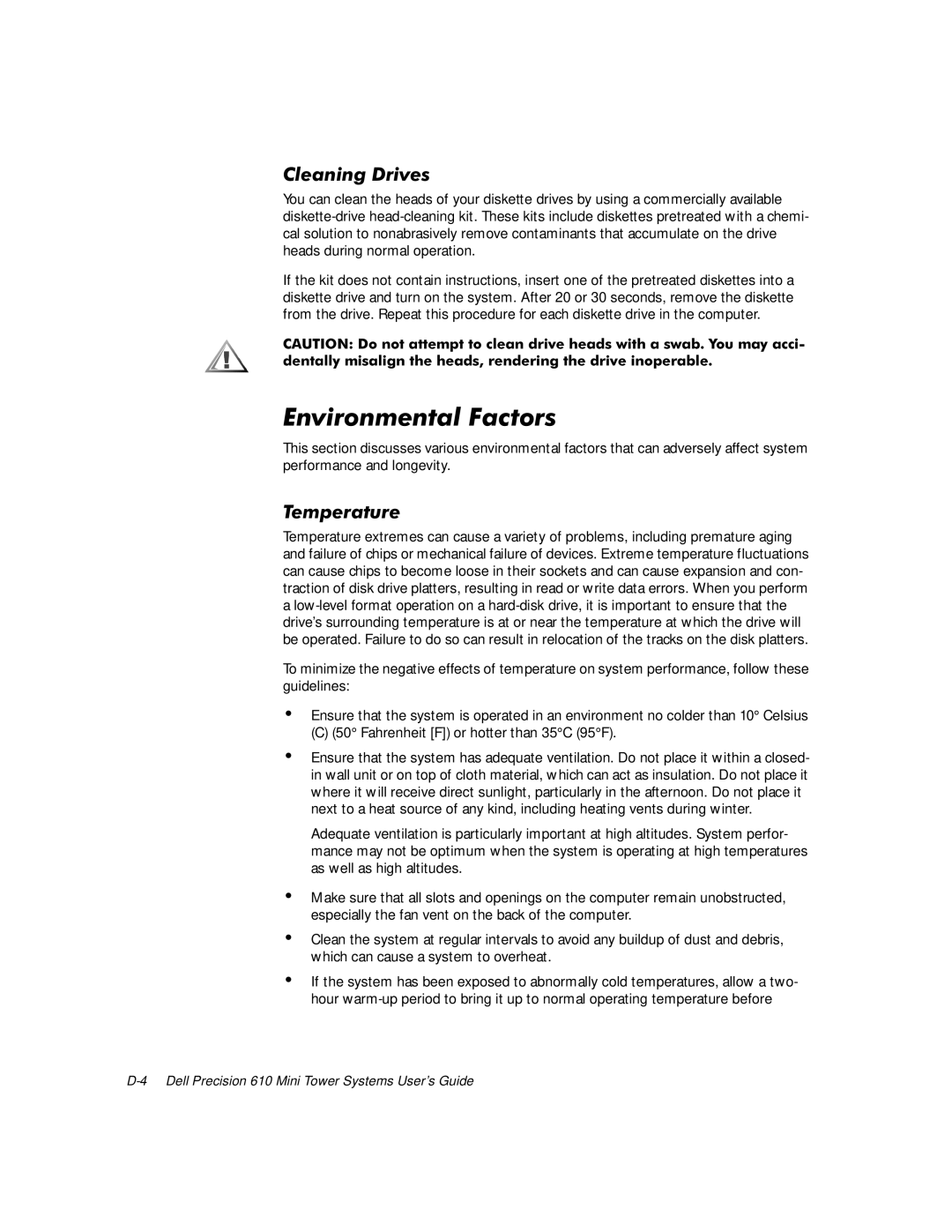Dell Precision 610 Mini Tower Systems User’s Guide
Clean the system at regular intervals to avoid any buildup of dust and debris, which can cause a system to overheat.
Make sure that all slots and openings on the computer remain unobstructed, especially the fan vent on the back of the computer.
‡
‡
‡ If the system has been exposed to abnormally cold temperatures, allow a two- hour warm-up period to bring it up to normal operating temperature before
OHDQLQJ'ULYHV
You can clean the heads of your diskette drives by using a commercially available diskette-drive head-cleaning kit. These kits include diskettes pretreated with a chemi- cal solution to nonabrasively remove contaminants that accumulate on the drive heads during normal operation.
If the kit does not contain instructions, insert one of the pretreated diskettes into a diskette drive and turn on the system. After 20 or 30 seconds, remove the diskette
GHQWDOO\&from$87,21the drivePLVDOLJQWKHKHDGV'R. RepeatQRWDWWHPSWWRthis procedureFOHDQUHQGHULQJWforGULYHeachKHdisketteDGVGULYHZLWKdriveLQRSHUDEOHinVZDEthe computer<RXPD\. DFFL
(QYLURQPHQWDO)DFWRUV
This section discusses various environmental factors that can adversely affect system performance and longevity.
7HPSHUDWXUH
Temperature extremes can cause a variety of problems, including premature aging and failure of chips or mechanical failure of devices. Extreme temperature fluctuations can cause chips to become loose in their sockets and can cause expansion and con- traction of disk drive platters, resulting in read or write data errors. When you perform a low-level format operation on a hard-disk drive, it is important to ensure that the drive’s surrounding temperature is at or near the temperature at which the drive will be operated. Failure to do so can result in relocation of the tracks on the disk platters.
To minimize the negative effects of temperature on system performance, follow these guidelines:
‡ Ensure that the system is operated in an environment no colder than 10° Celsius
(C) (50° Fahrenheit [F]) or hotter than 35°C (95°F).
‡ Ensure that the system has adequate ventilation. Do not place it within a closed- in wall unit or on top of cloth material, which can act as insulation. Do not place it where it will receive direct sunlight, particularly in the afternoon. Do not place it next to a heat source of any kind, including heating vents during winter.
Adequate ventilation is particularly important at high altitudes. System perfor- mance may not be optimum when the system is operating at high temperatures as well as high altitudes.
